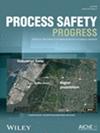Prediction of ionic liquids toxicity using machine learning models for application to gas hydrate
IF 1
4区 工程技术
Q4 ENGINEERING, CHEMICAL
引用次数: 0
Abstract
Ionic liquids (ILs) are highly favored in the oil and gas industry as gas hydrate inhibitors due to their dual functionality as thermodynamic inhibitor and kinetic hydrate inhibitor. Though known as the “green alternatives,” concerns about the effects of ILs in the environment are rising such that ILs can stabilize in water systems. Furthermore, there are insufficient data on the toxicity of ILs, limiting the use of ILs for industrial applications. Ridge, LASSO, decision tree, random forest, extra tree, gradient boost, and support vector regressions were used to develop IL toxicity predictive models. Random forest yielded the strongest predictive performance, scoring the highest利用机器学习模型预测离子液体的毒性,并将其应用于天然气水合物
离子液体(ILs)具有热力学抑制剂和动力学水合物抑制剂的双重功能,因此作为天然气水合物抑制剂在石油和天然气行业备受青睐。虽然离子液体被称为 "绿色替代品",但人们对其环境影响的担忧也在增加,因为离子液体可在水系统中稳定存在。此外,有关 ILs 毒性的数据不足,限制了 ILs 在工业中的应用。研究人员使用 Ridge、LASSO、决策树、随机森林、额外树、梯度提升和支持向量回归等方法建立了惰性气体毒性预测模型。随机森林的预测性能最强,R2 值最高,为 0.86,平均绝对误差和均方根误差值分别为 0.32 和 0.43。对特征进行了选择,以研究本研究中建立回归模型所涉及的五个分子描述符的贡献。结果发现,描述符 MSDC 在预测 IL 毒性方面的贡献率最高,达到 67%,其次是 SNarA 和 MAXDPC,贡献率分别为 15.2% 和 14.1%。进一步对定量结构-活性关系模型进行了验证;使用三个描述符后,决策树回归的预测性能提高了 2%,而随机森林、额外树和梯度提升的 R2 值保持不变。
本文章由计算机程序翻译,如有差异,请以英文原文为准。
求助全文
约1分钟内获得全文
求助全文
来源期刊

Process Safety Progress
工程技术-工程:化工
CiteScore
2.20
自引率
10.00%
发文量
99
审稿时长
6-12 weeks
期刊介绍:
Process Safety Progress covers process safety for engineering professionals. It addresses such topics as incident investigations/case histories, hazardous chemicals management, hazardous leaks prevention, risk assessment, process hazards evaluation, industrial hygiene, fire and explosion analysis, preventive maintenance, vapor cloud dispersion, and regulatory compliance, training, education, and other areas in process safety and loss prevention, including emerging concerns like plant and/or process security. Papers from the annual Loss Prevention Symposium and other AIChE safety conferences are automatically considered for publication, but unsolicited papers, particularly those addressing process safety issues in emerging technologies and industries are encouraged and evaluated equally.
 求助内容:
求助内容: 应助结果提醒方式:
应助结果提醒方式:


